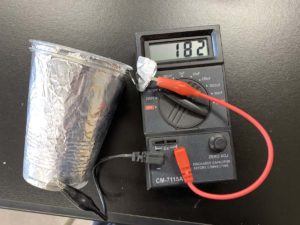The Dandelion Deception: Why the “Single Flower” is Actually 100+ Tiny Blooms.
I’m Ken Kuwako, a Science Trainer. Every day is an experiment.
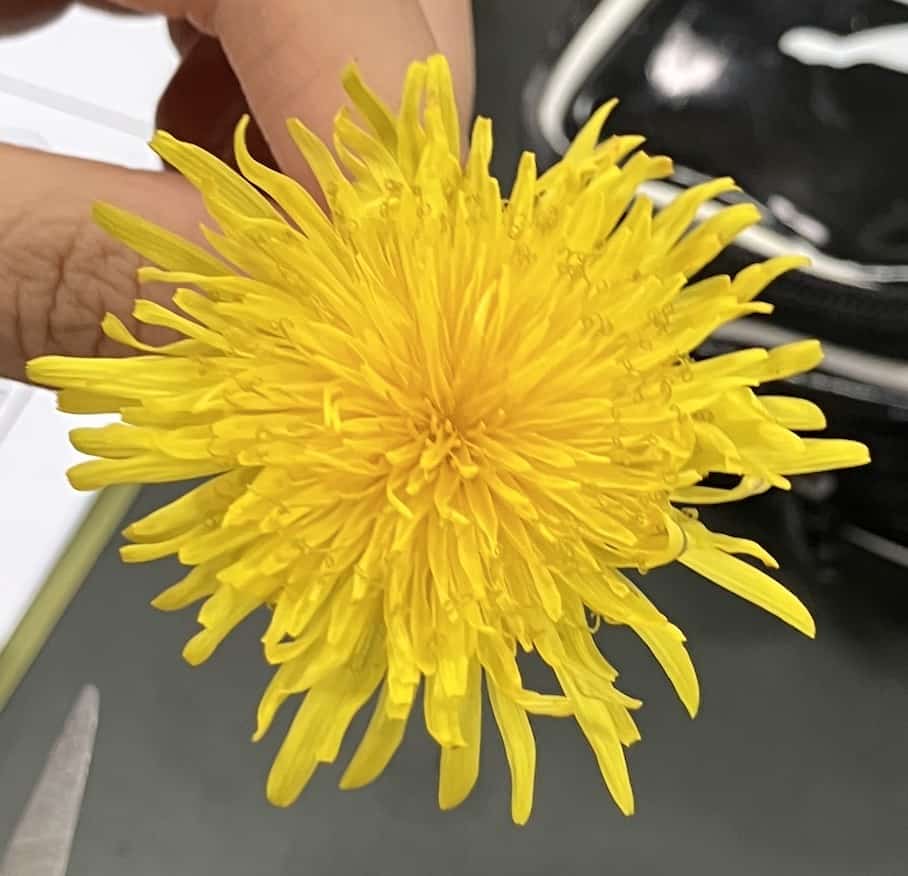
Seeing the adorable yellow dandelions in fields or by the roadside always warms our hearts and truly makes us feel the arrival of spring. However, wait a minute! The dandelion we usually see as “one single flower,” is it really just one flower?
In fact, what looks like a single dandelion bloom is actually a “floral bouquet” made up of numerous tiny flowers packed tightly together. This surprising structure is called an “Inflorescence” or, more specifically, a “Capitulum” (Flower Head).
When I tell this to students, I always hear surprised gasps like, “What?! Are all these tiny things flowers? Is each one of these petals a flower?” (Almost! What looks like a single petal is actually a complete flower itself!) This time, I’d like to introduce a class idea for exploring the overlooked secrets of the common dandelion through simple observation. You’ll start seeing ordinary roadside weeds as amazing marvels of evolution.
What You Need for the Lesson Prep
- Dandelions (a few, if possible)
- A razor blade or utility knife
- Stereo microscope (a magnifying glass/loupe is OK if you don’t have one)
- Microscope slide and cover slip (for observing pollen)
- Tweezers, scissors, and an observation sheet (for recording)
Observation Steps and Key Points: An Invitation to the Micro-World
① Cut a cross-section of the flower: It’s a crowded town of tiny blooms!
Lay the dandelion flower on its side and carefully cut it down the center with a razor blade. What do you see? The part that looked like a single flower is clearly a structure where many small flowers (technically called “florets”) are tightly clustered. This is the true nature of the Capitulum. You’ll be amazed by how perfectly they are assembled as a single team.
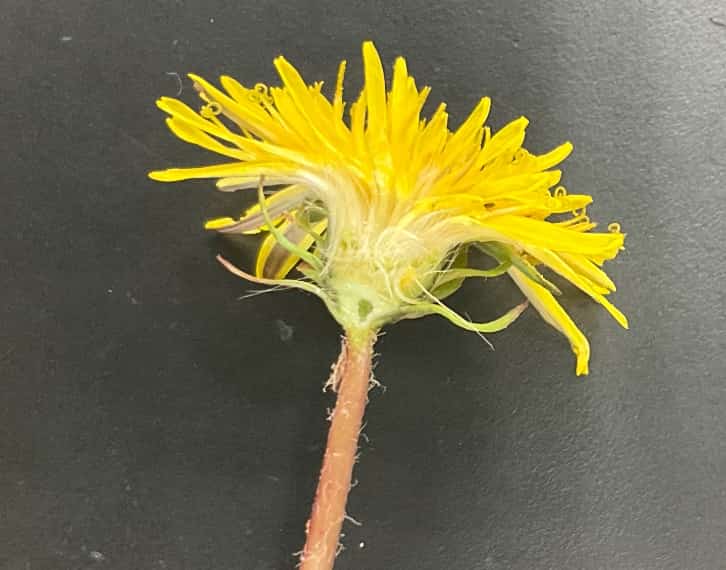
Dandelion Cross-Section
② Observe the pistil under the microscope: Discovering an evolutionary trick
Carefully pluck a single floret from the center of the flower with tweezers and observe it under the stereo microscope. You’ll confirm that it has a distinctive pistil that splits into two at the tip. This “curled” shape is a prime example of a structural adaptation designed to efficiently catch pollen carried by insects. The moment students realize that the diagram in their textbook is happening right inside a real dandelion will significantly deepen their understanding.

Observing a Dandelion Flower with a Stereo Microscope…
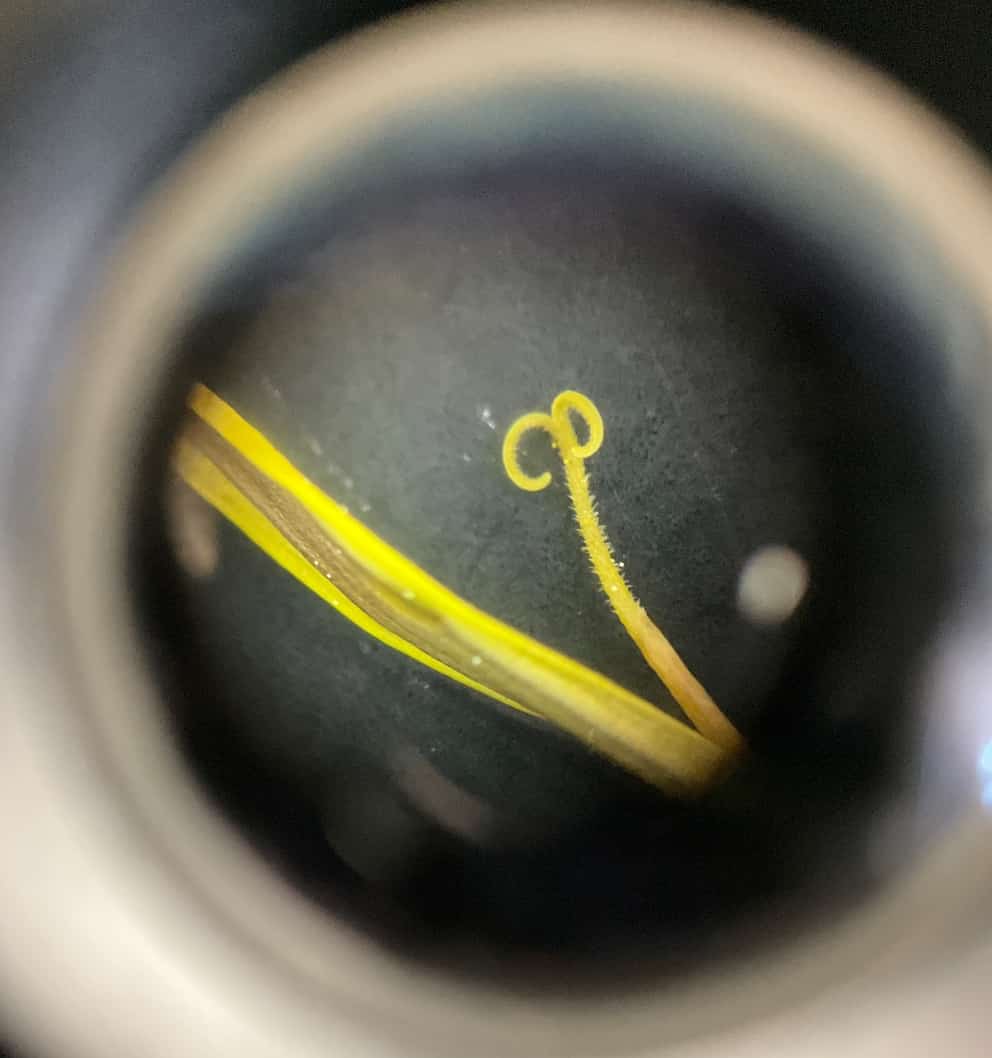
You can see the beautiful pistil, curled at the tip.
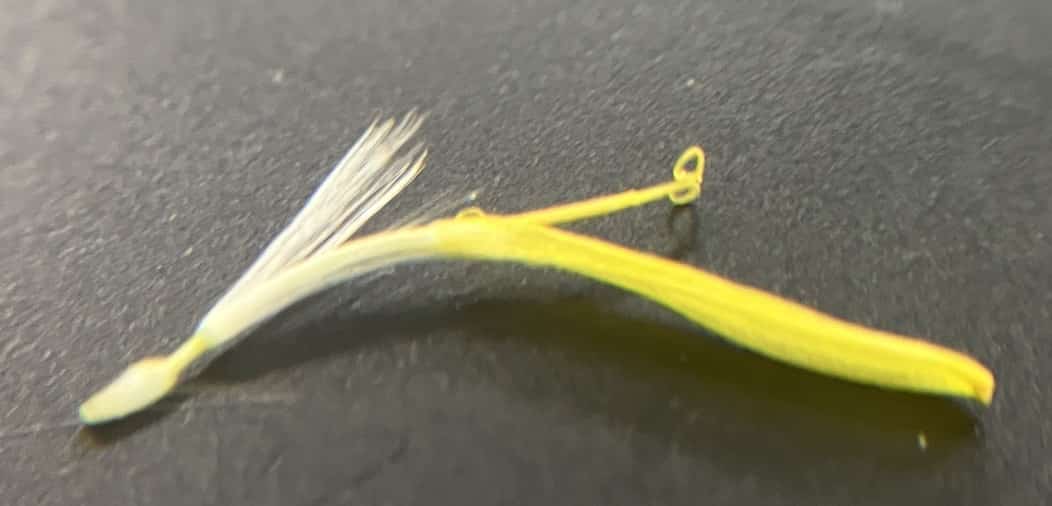
One floret looks like this.
③ The Amazing Transformation! The Moment the “Sepal” Becomes “Pappus”
And here is another astonishing fact. Take a close look at the base of the floret. You should see a green “sepal.” Incredibly, after the flower is done blooming, this sepal transforms into the fluffy “pappus” (seed parachute) we all know! The sepal that supported the flower dramatically changes its shape to become a parachute for dispersing the seeds. It’s a magnificent “metamorphosis” by the plant to ensure its survival.
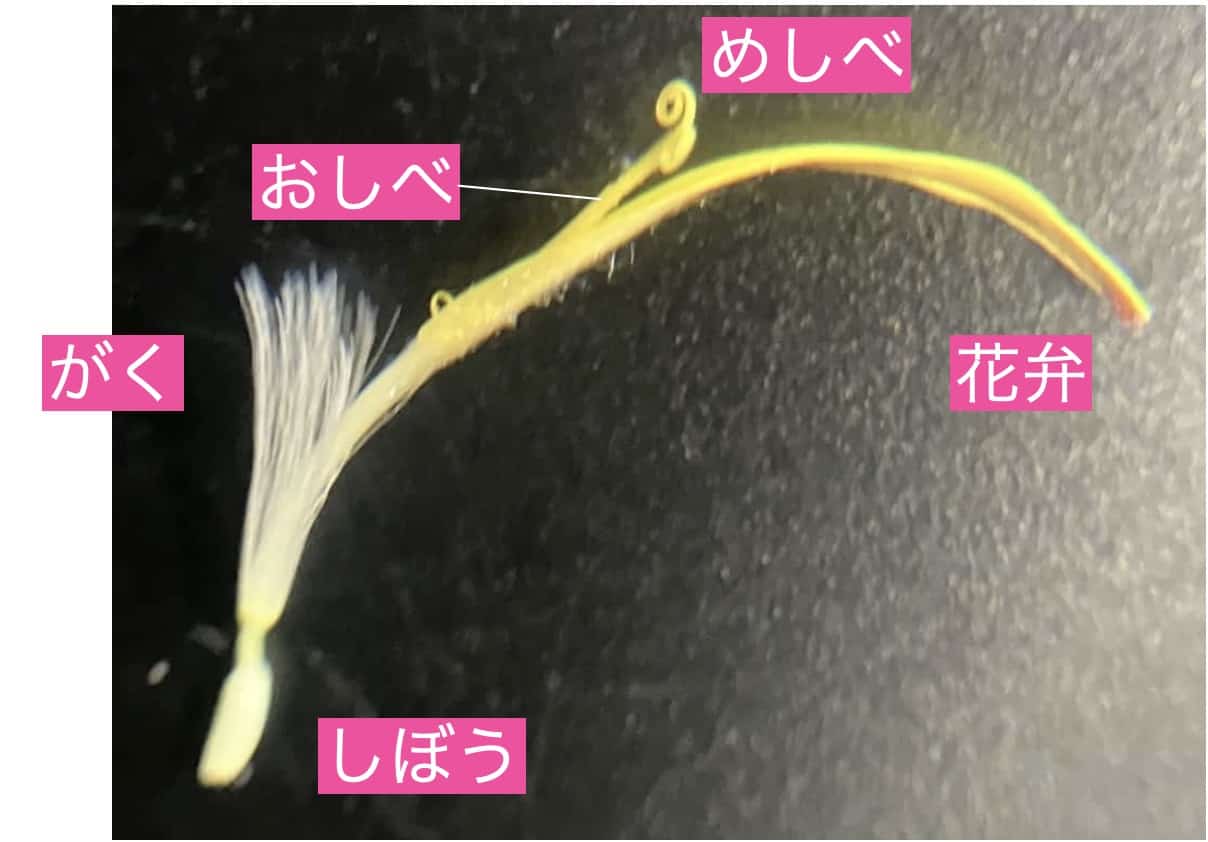
The sepal turns into the pappus.
You might want to have the students tape the observed floret into their notebooks. Depending on the season, you can substitute the dandelion with the “Cat’s Ear” plant (Hawkweed). Their structures are very similar, but the shape of the pistil is subtly different. Encourage them to compare the two to find the difference—discovering differences is a core joy of science!
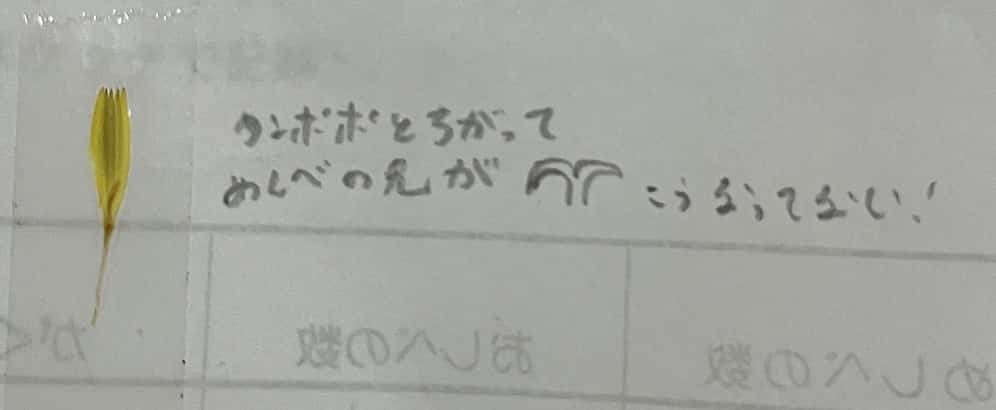
After observing, make sure they sketch what they see. This helps develop the skill of seeing details closely.
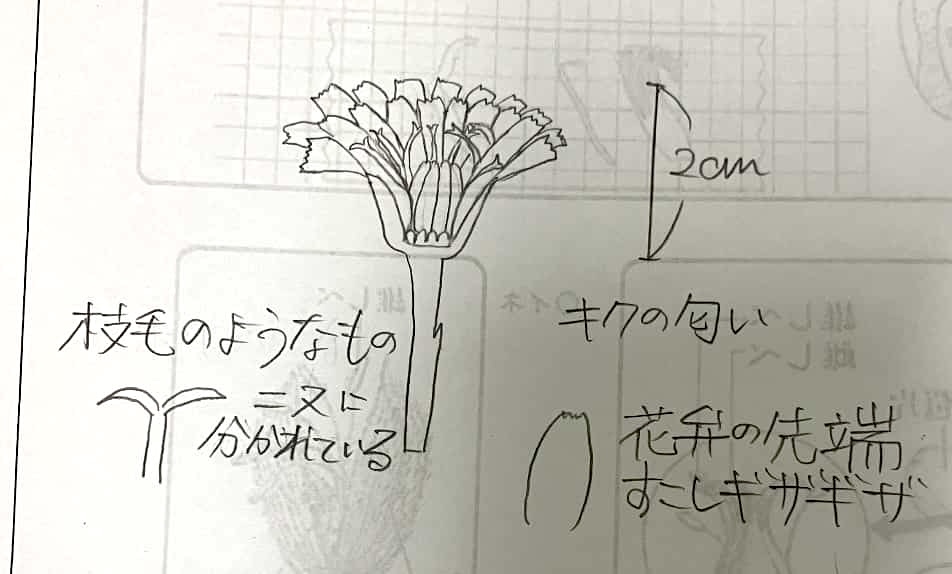
Sketching in Progress 1
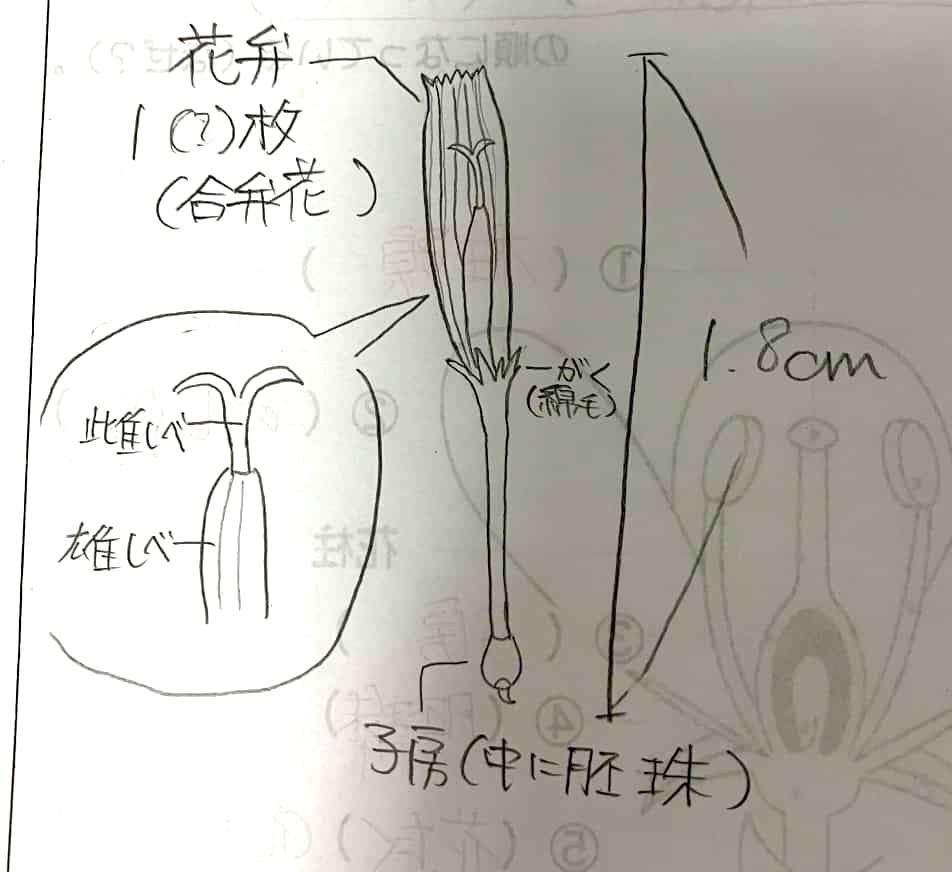
Sketching in Progress 2
④ Observe the pollen on a slide: Why the spikes?
Place some pollen on a slide and examine it under an optical microscope. Dandelion pollen has spiky projections on its surface, making it look like a chestnut burr. Why is this? Dandelions are “entomophilous” (insect-pollinated) flowers. These spikes act like a “Velcro” to firmly attach the pollen to the bodies of insects like honeybees. In contrast, “anemophilous” (wind-pollinated) pollen, like cedar or pine, is smooth so it can fly long distances. This difference is evidence of evolutionary strategies driven by pollination methods.
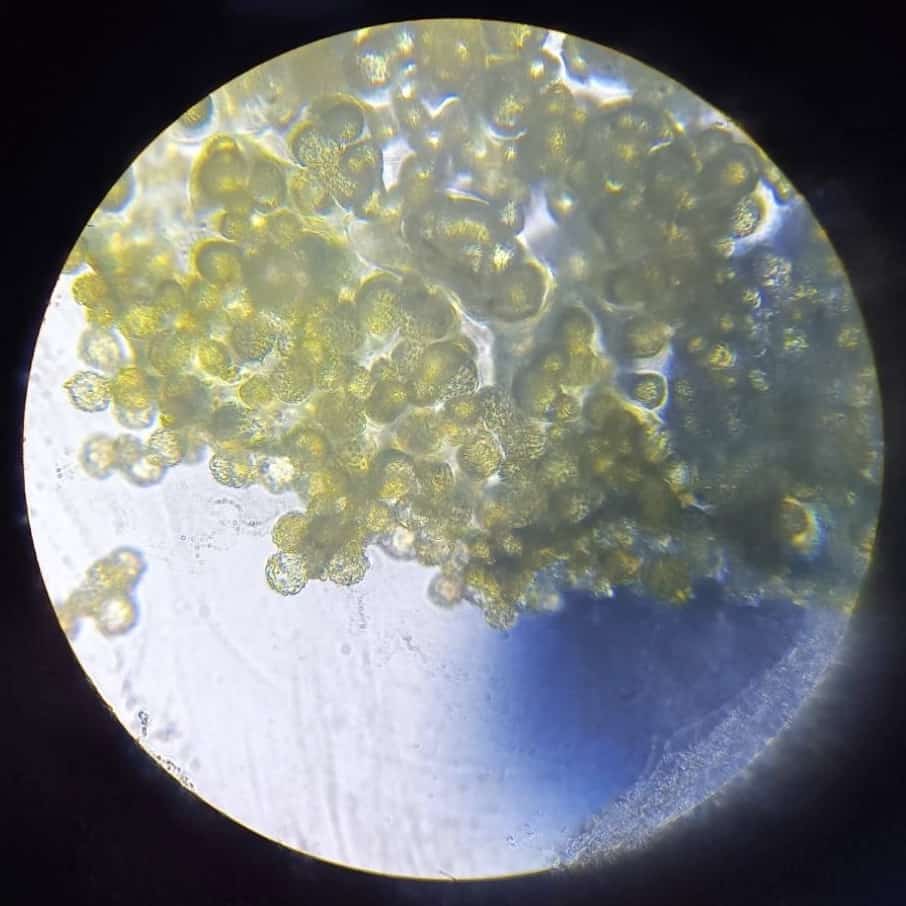
Pollen up close
What are the advantages of the Capitulum? The Dandelion’s Survival Strategy
The Capitulum structure is common in plants belonging to the Asteraceae (Daisy) family, like dandelions and sunflowers. Why did they choose the strategy of bundling small flowers together?
It offers significant benefits (advantages).
Stand out with the “Billboard Effect”! Instead of tiny flowers blooming separately, gathering them into one large flower shape creates a huge billboard for insects, shouting, “Nectar here!”, efficiently drawing them in.
Increase chances with “Extended Business Hours”! Dandelion florets bloom sequentially, starting from the outer edge and moving inward toward the center. This allows the plant to maintain “open for business” for a longer period, maximizing the chances for pollination.
When students recognize these “strategies” of plants, their perspective on nature shifts from seeing “just a weed” to seeing an “amazing survivor full of ingenious tricks.” Even the familiar dandelion holds many new discoveries just by changing the way you observe it. This content is suitable for units on “Flower Structure and Function” or “Growth and Reproduction of Organisms” in middle school science. Please consider incorporating this observation lesson using spring nature!
*If you’re interested in observing the flight of the dandelion pappus and seeds, please see our next article, “Dandelion Pappus: Why Does It Fly?”
Contact and Requests
Bring the wonder and fun of science closer to you! We provide easy-to-understand guides on fun science experiments you can do at home and the tricks behind them. Feel free to search around! ・About the operator, Ken Kuwako: Click here ・For various requests (writing, lectures, experimental classes, TV supervision, appearances, etc.): Click here ・Article updates are posted on X (formerly Twitter)!
![]() The Science Neta Channel features experiment videos!
The Science Neta Channel features experiment videos!


